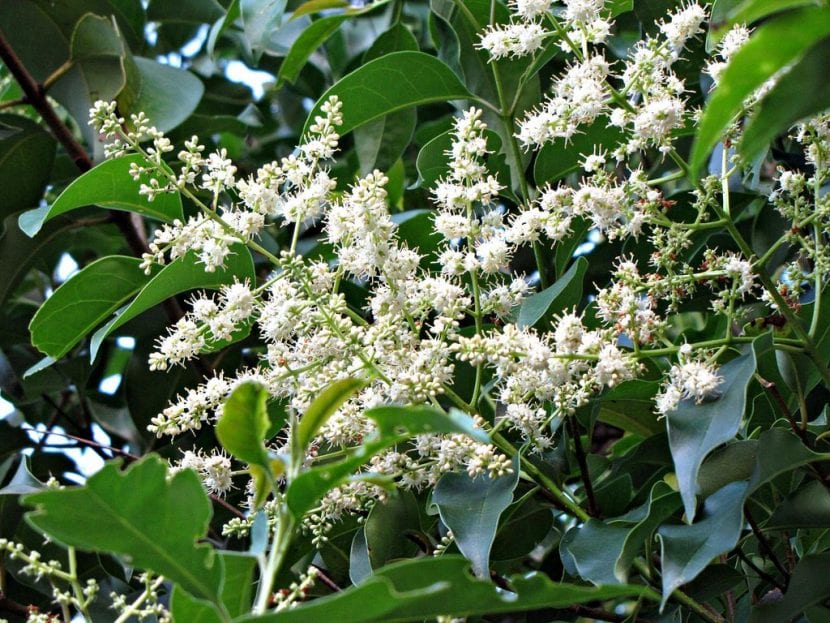
Image - Flickr / Mauricio Mercadante
El Ligustrum Lucidum It is the perfect tree to plant in tight spaces, as it is beautiful, easy to care for and, most importantly, although it can reach impressive heights, it does not take up much. In fact, due to these wonderful characteristics, it is usually included in urban trees, since it also provides a pleasant shade over time.
So if you are curious to know everything about him, Then I am going to tell you precisely that: characteristics, care, and more.
Origin and characteristics
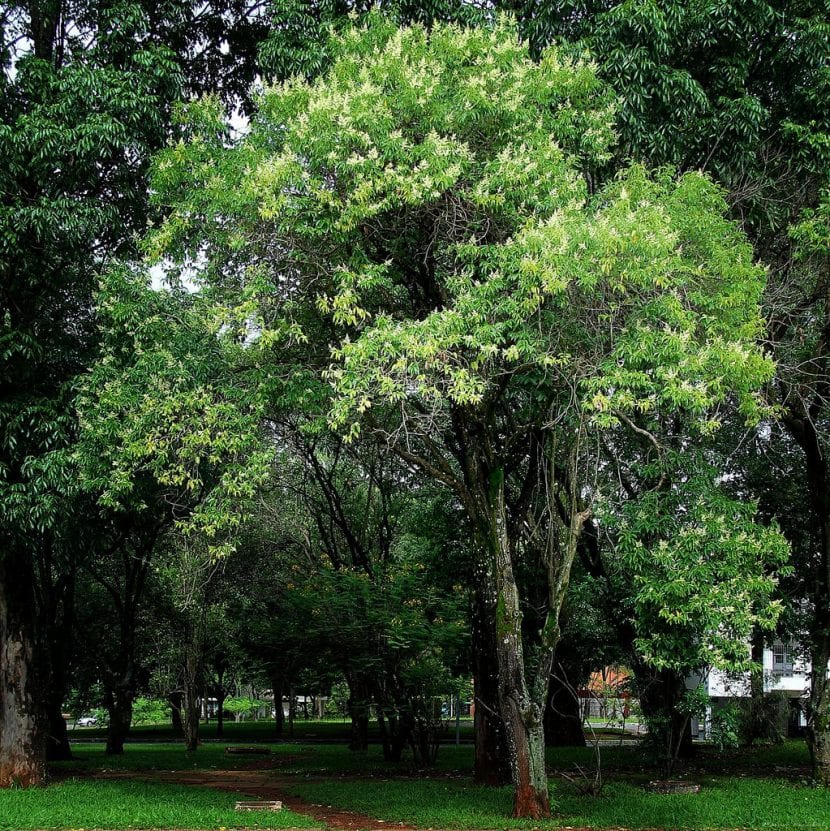
Image - Flickr / Mauricio Mercadante
Our protagonist is an evergreen tree native to the southern half of China, where it is called my zhen zi. Its scientific name is Ligustrum Lucidum, and in Spanish-speaking countries we call it arboreal privet, privet, privet or henna. Grows to heights between 3 and 16 meters, being the most common that it remains as a medium-sized tree of 7-8m.
The leaves are opposite, dark green or variegated (yellow and green) and 5-15cm long by 3-8cm wide. The flowers are grouped in inflorescences in spring, and they are white, hermaphroditic and aromatic. The fruit is a bluish or blackish globose berry that is 1cm wide.
What are the care of the Ligustrum Lucidum?
Would you like to have a specimen in your garden? If so, do not hesitate to provide this care:
Location
It is a plant that has to be outside, in full sun. It does not have invasive roots, but it is advisable to leave a space of at least 5 meters between walls, paved floors, etc. and him so that he can grow properly.
Earth
- Flower pot: It is not very demanding, but to be successful it is necessary that the substrate to choose is rich in organic matter and, above all, that it be able to quickly absorb the water and filter the excess. With this in mind, a good mix can be the following: 50% mulch + 40% perlite + 10% akadama or pumice.
- Garden: grows in fertile soils, with good drainage. It is afraid of waterlogging, so if you have a very compact soil it is advisable to dig a hole of at least 50cm x 50cm (better 1m x 1m), cover its sides and the base with a shading mesh (on sale here) and then fill it with the mixture mentioned above. To prevent this new substrate from mixing with the earth, a tree must be made (a barrier of earth around the trunk of the plant, with a height of about five centimeters).
Irrigation
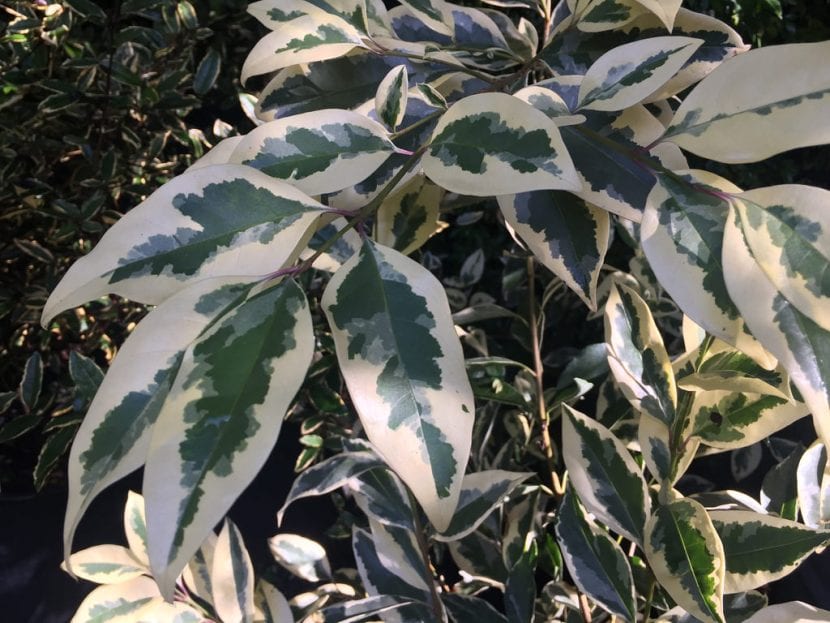
Ligustrum lucidum 'Variegata'
Image - Flickr / MeganEHansen
Moderate. In principle, it will be necessary to water an average of 3-4 times during the hottest and driest time of the year, and around 1-2 times a week the rest. But be careful, if you live in an area where, for example, it rains very often, you will have to space out the waterings; On the contrary, if it hardly rains in your area, you will have to water more often. In any case, waterlogging must be avoided as much as possible.
The water to use can be calcareous (pH 7), although if you have a place available to put containers (buckets for example) in order to collect rainwater and then use that water for irrigation, the tree will undoubtedly appreciate it.
Subscriber
From early spring to late summer (and even autumn if the weather is mild / warm) it is advisable to fertilize it with organic fertilizers such as guano or manure, or homemade, such as egg and banana shells or compost among others.
You just have to bear in mind that, if grown in a pot, you have to use liquid fertilizers, since otherwise the water drainage will be complicated, and the roots could rot.
Pruning
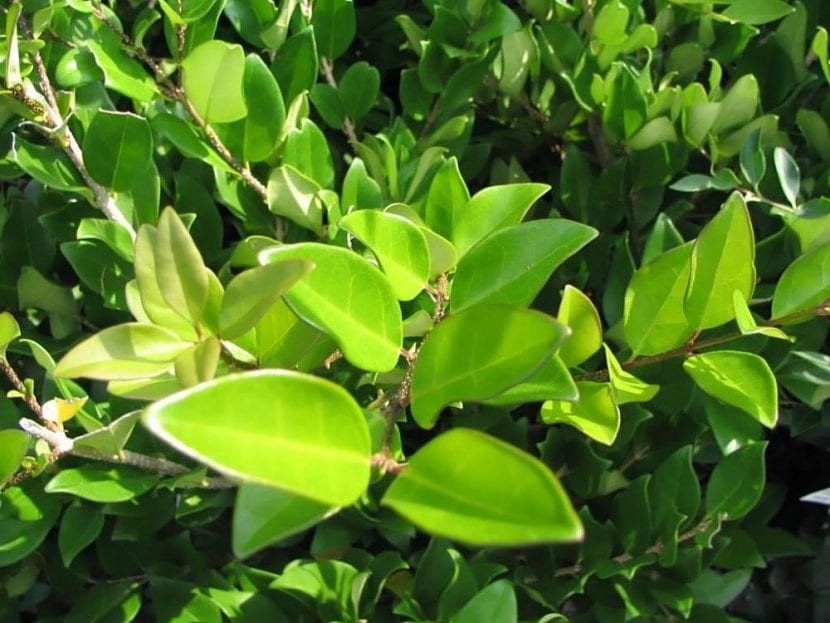
Image - Wikimedia / David J. Stang
It tolerates pruning very well, whenever it is done late winter. Dry, diseased, weak or broken branches must be removed, and those that are getting too long must be trimmed.
It is usually shaped into a ball, but in a garden you might like better if it has a somewhat wide canopy to provide shade.
Multiplication
El Ligustrum Lucidum multiplies by seeds in spring and cuttings in summer. Let's see how to proceed in each case:
Seeds
The step by step to follow is as follows:
- First, put the seeds in a glass of water for 24 hours. The next day, discard (or sow them in a separate seedbed) those that have remained floating, since they most likely will not germinate.
- Next, fill a seedbed (seedling tray, pot, or anything that is waterproof and has holes for drainage) with universal growing medium (for sale here) mixed with 30% pumice (get it here).
- Then water conscientiously.
- Then, place the seeds on its surface, ensuring that they are a little separated from each other.
- Finally, cover them with a thin layer of substrate and place the seedbed outside, in semi-shade.
If all goes well and the substrate is kept moist but not flooded, they will germinate in 2-4 weeks.
Cuttings
To multiply it by cuttings, you just have to cut a branch of soft, somewhat hard wood that measures about 30-40cm long, impregnate the base with homemade rooting agents and then plant it in a pot with vermiculite (get it here) that will always remain moist.
In about 1 month it will emit its own roots.
Pests

Image - Flickr / Mauricio Mercadante
The arboreal privet can be affected by mealybugs, Whether cottony or limpet type. You will find them in the leaves and in the tender branches, feeding on the sap.
They are fought with anti-mealybug insecticides, diatomaceous earth (on sale here) or with paraffins.
Planting or transplanting time
In spring, when the risk of frost has passed. If it is potted, transplant every two years.
Rusticity
It resists frosts of up to -12ºC.
What uses does it have?
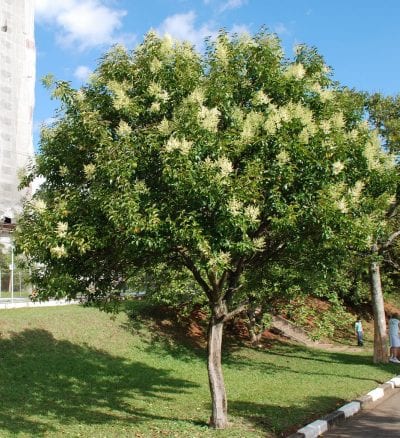
Image - Flickr / mauroguanandi
Ornamental
It is a very decorative plant, which looks great as isolated specimen, in groups or in alignments. In urban gardening it is used a lot, as it supports pollution well. In addition, it is not affected by high temperatures, as long as you have a regular water supply.
As if that were not enough, it can be worked as bonsai (here you have information about it).
Medicinal
In traditional Chinese medicine the fruits are used to treat tinkling in the ears and fatigue. But it is preferable not to consume them, at least not in excess, since they can be toxic.
What did you think of the Ligustrum Lucidum?
THE INFORMATION IS VERY INTERESTING, I THOUGHT IT WAS NATIONAL AND I WILL TRY TO GET THE BERRIES BECAUSE I HAVE TINNITUS AND SEE IF I IMPROVE WITH IT THANKS FOR THE INFORMATION
Good plant one at the beginning of October and its leaves are drying, what can I do?
Hello Nancy.
I recommend that you take a look at its leaves, as it may have a plague. Maybe some mealybug or aphids. If so, they can be removed with water and a little mild soap.
In the event that you do not have anything, it is possible that you are going thirsty, or on the contrary that you have too much water. In this article we talk about it.
Greetings.
The grass doesn't grow underneath, what plants can I plant to cover the ground?
hello good evening ... query: do these species have very invasive roots ?? ' I am looking for trees that DO NOT RAISE THE STREETS… .. is there a difference with respect to this issue in relation to the JACARANDA ?? ' Thank you very much.
I'm Cesar from San Antonio Oeste (Rio Negro)
Hi Cesar.
El jacaranda It does not have very invasive roots, but it is recommended to plant it at a distance of about five meters from where there are pipes and others.
The privet can be closer (about 3 meters).
Greetings.
Good! How do I get the seeds? Are they derived from the very fruit that it generates?
Hello Agustin.
Yes that's how it is. The flowers of the Ligustrum are hermaphrodites, so that a single specimen can produce fruits with seeds.
Greetings.
THANK YOU FOR ALL THE INFO
I HAVE MY DISCIPLINED SERENO ON MY PATHWAY. I WANT YOU TO ALWAYS BE BEAUTIFUL.
Hi Alicia.
We are glad that you liked it 🙂
A greeting.